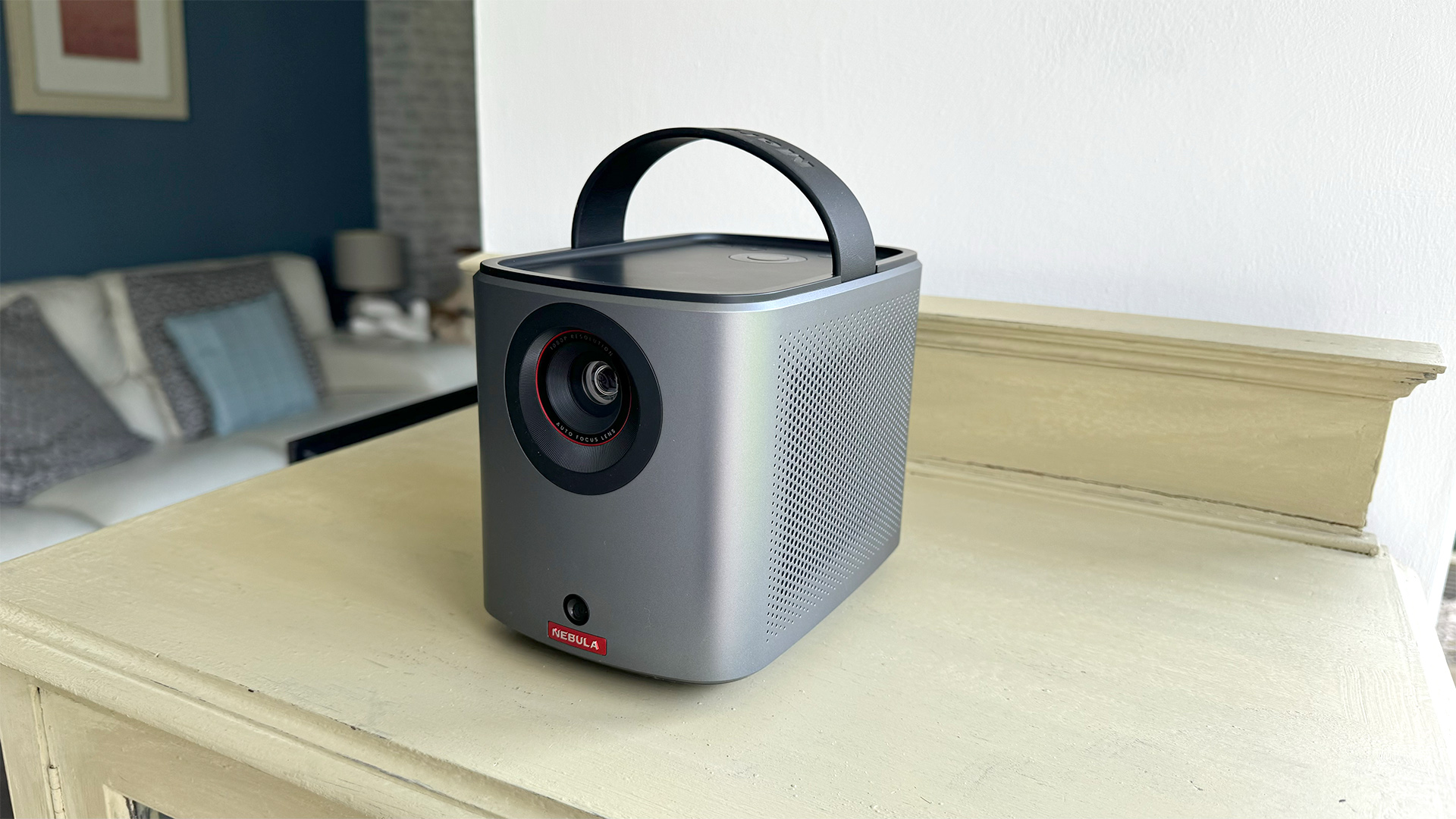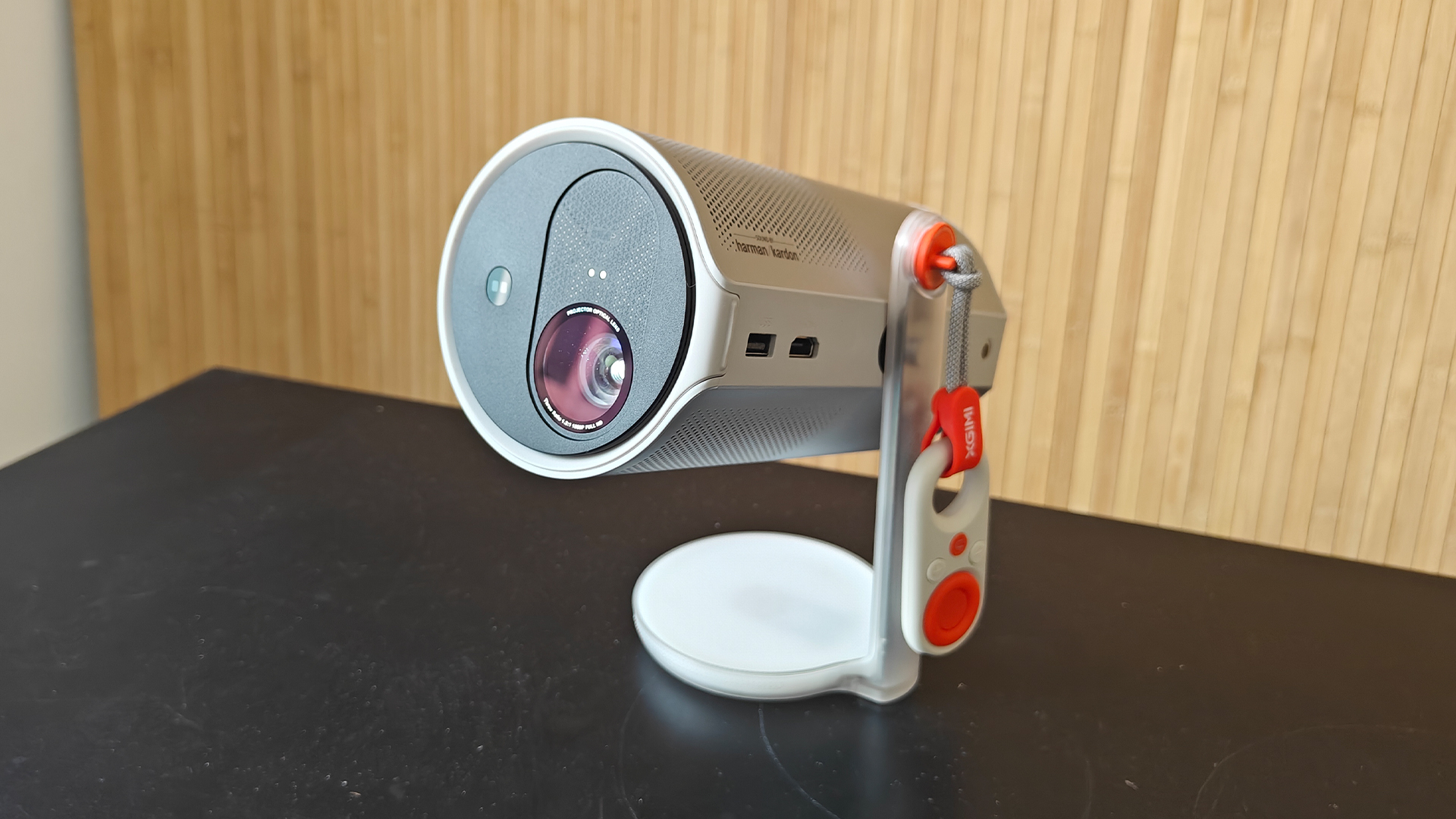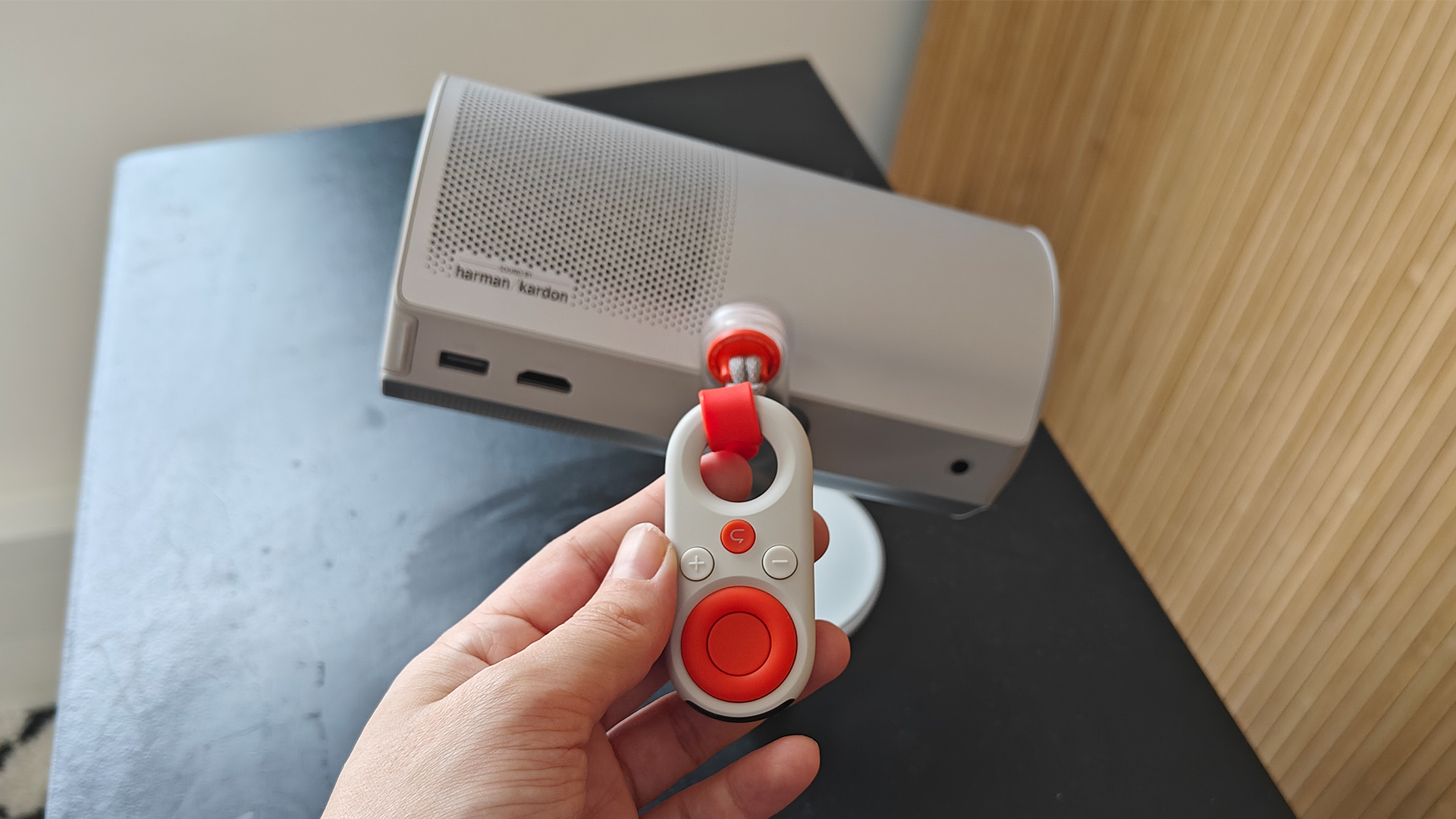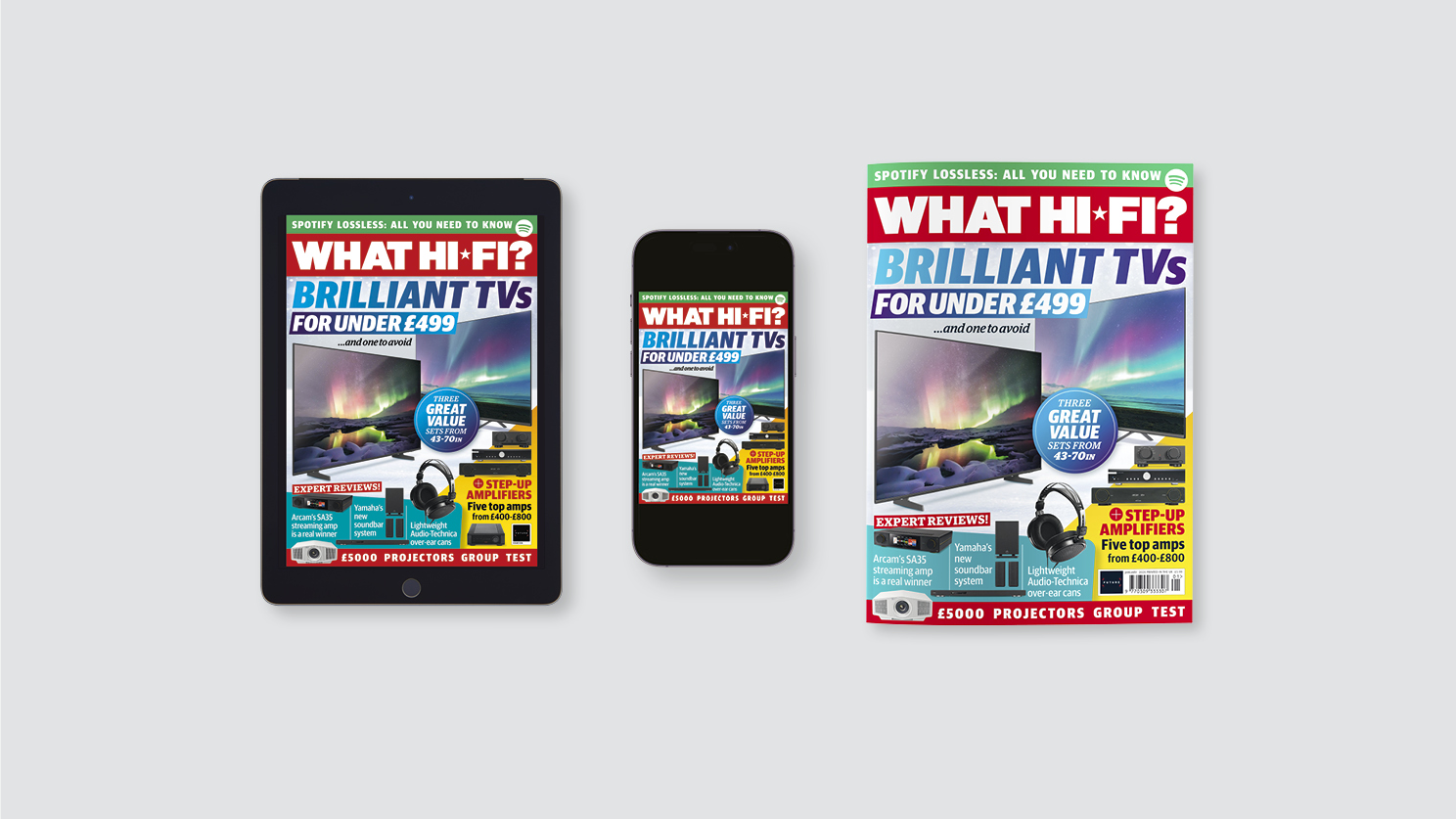Xgimi MoGo 4 vs Anker Nebula Mars 3 Air: which projector is better?
This head to head is a close one

Projector type DLP LED
Brightness 450 ISO Lumens
Screen size 40-200 inches
Native resolution 1080p
HDR support HDR10
Dimensions (hwd) 20.8 x 9.7 x 9.7cm
Xgimi's latest projector is a big improvement, on paper, over its predecessor, the MoGo 3 Pro, as it adds a built-in battery and an upgraded design. But can it knock the Nebula Mars 3 Air off the top spot?
Pros
- Compact, lightweight design
- Sharp and punchy picture
- Easy set-up
Cons
- No BBC iPlayer
- Thin sound
- Slightly overexuberant colours

Projector type DLP LED
Brightness 399 ANSI Lumens
Screen size 30-150 inches
Native resolution 1080p
HDR support HDR10, HLG
Dimensions (hwd) 13 x 12 x 18cm
With a cool yet practical design, the Anker Nebula Mars 3 Air blew us away with its natural picture and impressively expansive sound by projector standards.
Pros
- Attractive and well built
- Good picture and sound quality
- Easy to set up
Cons
- Inconsistent streaming-app support
- HDR peaks lack impact
- Minor red undertone to dark scenes
Xgimi has been producing a steady stream of portable projectors recently, with the latest hitting the shelves only last week.
The MoGo 4 is the brand’s latest contender, but with some formidable competition on the market, it’s an uphill battle for the small, yet mighty, projector.
The Anker Nebula Mars 3 Air is standing with its arms crossed, sizing up the MoGo 4 with a stern look. It is, after all, the current overall champion of our best portable projectors page.
Luckily, we have tested both projectors, so there is no need for the pair to step into the ring and settle things with violence.
So let’s take a look at how these projectors perform.
Xgimi MoGo 4 vs Anker Nebula Mars 3 Air: price

You can get the MoGo 4 for £509 / $499 (around AU$765).
While we have yet to see any price reductions yet, as the projector has just hit the shelves, it's quite likely that there will be discounts in the near future.
The latest hi-fi, home cinema and tech news, reviews, buying advice and deals, direct to your inbox.
The Nebula Mars 3 Air launched at a slightly higher price of £550 / $600 / AU$1300.
Since it was released over a year ago, however, we have seen some decent discounts knocking it down much closer to the MoGo 4’s price.
**Winner: Xgimi MoGo 4**
Xgimi MoGo 4 vs Anker Nebula Mars 3 Air: design

Both the Xgimi MoGo 4 and the Anker Nebula Mars 3 Air have practical yet stylish designs that are difficult not to like. They also have built-in batteries, with both models touting a claimed 2.5 hours of playback when not in the vicinity of a mains socket.
Weighing in at 1.3kg, the MoGo 4 has a cylindrical body that can be twisted to transform the hard plastic on the side into a nifty stand. This can then be adjusted up and down easily, making set-up a relatively fuss-free affair.
A mini-remote is also included alongside the full-fat remote control we would expect, which could make it easier to transport – you can leave the primary backlit remote at home when taking the MoGo out of the house if you’d prefer to keep it safe and sound.
The Nebula Mars 3 Air’s bucket-like design weighs only 0.4kg more than the MoGo 4, making it simple to take on the go. The included carry handle is appreciated, but the lack of physical positional adjustment is a bit of a problem.
With a more versatile design that allows for easier picture positioning, the MoGo 4 comes out on top.
**Winner: Xgimi MoGo 4**
Xgimi MoGo 4 vs Anker Nebula Mars 3 Air: features

Both portable models are 1080p-resolution, LED-lit DLP projection systems. They also use Google TV as their operating system, which has built-in Netflix; we note this because up until now, support for Netflix on portable projectors has been spotty at best.
You can also access Amazon Prime Video, Apple TV+ and Disney+, but BBC iPlayer and Channel 4 are not available unless you Google Cast from another device.
There is only one HDMI connection on each projector, but that's to be expected, considering they are primarily designed to be portable; streaming is built in, and we’re not convinced anyone is going to be carrying a Blu-ray player or console everywhere they go.
When it comes to picture modes, both models are keeping things simple. They offer Movie, Standard and Game presets, as well as an Eco mode which lowers brightness to extend play time when running away from a mains power source.
It’s a similar story with the audio presets on offer, with the two models offering Music and Movie modes. The Nebula Mars 3 Air has an Outdoors mode, while the MoGo 4 offers a Sports mode. We can’t see this being a huge sway in terms of appeal for cinephiles, but sports fans will see the appeal of having a louder and more spacious sound.
Both projectors feature two built-in drivers; however, the MoGo 4’s 6W speaker system is topped by the Anker’s slightly more powerful 8W system.
In terms of setup features, the MoGo 4 is keeping things simple yet practical with auto-keystone correction that kicks in when the projector is moved.
The Anker model has its own version of this, which they have called ‘Intelligent Environment Adaptation 3.0.’ This also includes an auto object avoidance system that attempts to reposition the image to the side of any objects that might appear in the projector’s direct line of sight.
Both projectors are pretty much on the same level when it comes to features, however, so a tie seems fair.
**Winner: draw**
Xgimi MoGo 4 vs Anker Nebula Mars 3 Air: picture

Now for the main attraction.
We were impressed by the picture performance from the MoGo 4 during testing, as we found it presents a “vibrant and crisp” overall image.
It does tend to overdo that vibrancy at times, though. This is most likely because Xgimi wants the image to be clear in light conditions, but in a more traditional dark room, it can look as though the colours are overcooked.
Despite that, it looks impressively natural and does a good job with dark details. We also noted that the contrast of flaming torches against the black background in Kingdom of the Planet of the Apes looked “punchy”, which made for an overall cinematic image.
With the Nebula Mars 3 Air, we say in our review that the “sharpness doesn’t look forced or processing-induced” and note that it can “present dark scenes without much of the grey wash that’s so common among rival projectors.”
While we do notice that the auto focus system can sometimes leave the image looking a touch softer in its upper quarter, it is still easy to live with and great fun to watch with pretty much any source you throw at it.
This time, it’s the Nebula model that just takes the lead.
**Winner: Anker Nebula Mars 3 Air**
Xgimi MoGo 4 vs Anker Nebula Mars 3 Air: sound

With audio performance, the Nebula Mars 3 Air emerges more clearly as a leader. The sound is pretty expansive by projector standards and doesn't feel trapped inside the body.
We note in our review: “Detailed movie mixes sound crisp and busy, but are also well-rounded enough not to sound harsh or thin.”
The MoGo 4, on the other hand, keeps the sound quite localised. This results in a reasonably thin overall sound, although it does manage to maintain a balanced presentation.
Neither of the projectors manages to go very loud, but this is to be expected when the big focus for the manufacturers is portability.
**Winner: Anker Nebula Mars 3 Air**
Xgimi MoGo 4 vs Anker Nebula Mars 3 Air: verdict

Both the MoGo 4 and the Anker Nebula Mars 3 Air are excellent examples of how picture quality doesn't have to suffer for a projector model to be portable.
If getting the best picture and sound quality out of a projector is the most important aspect for you, then the Nebula Mars 3 Air does pip the MoGo 4 to the post.
That being said, the MoGo 4 still provides a clear picture with a more versatile build.
**Overall winner: Anker Nebula Mars 3 Air**
Robyn Quick is a Staff Writer for What Hi Fi?. After graduating from Cardiff University with a postgraduate degree in magazine journalism, they have worked for a variety of film and culture publications. In their spare time, Robyn can be found playing board games too competitively, going on cinema trips and learning muay thai.
You must confirm your public display name before commenting
Please logout and then login again, you will then be prompted to enter your display name.

